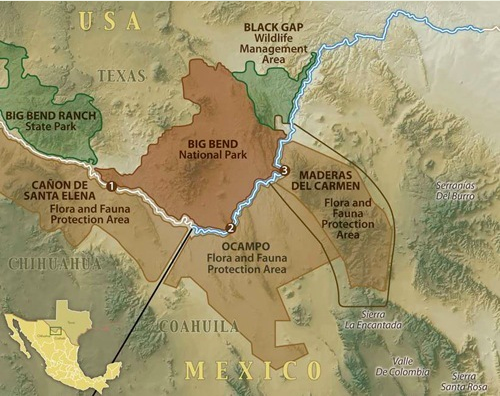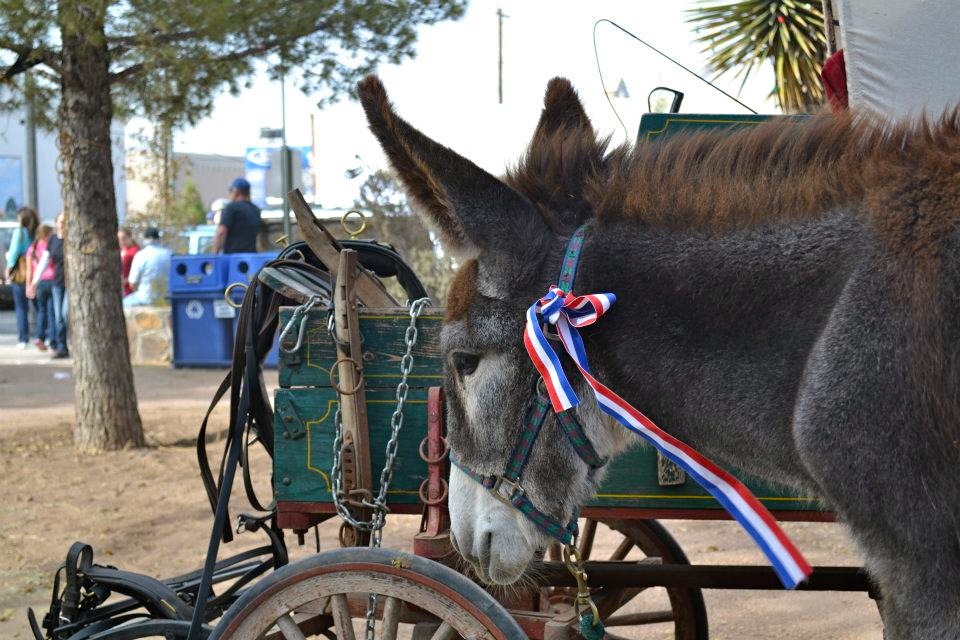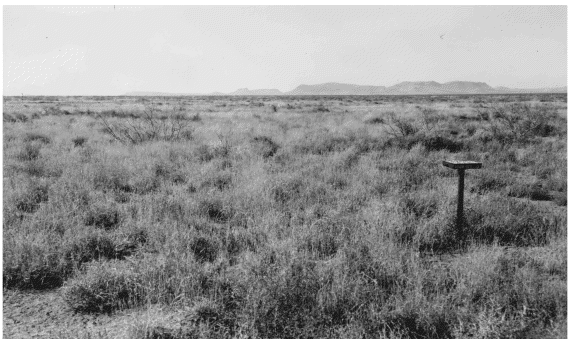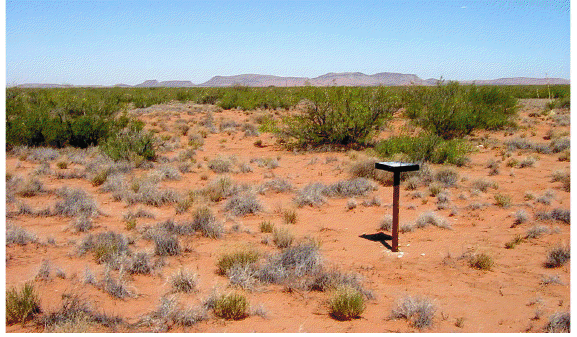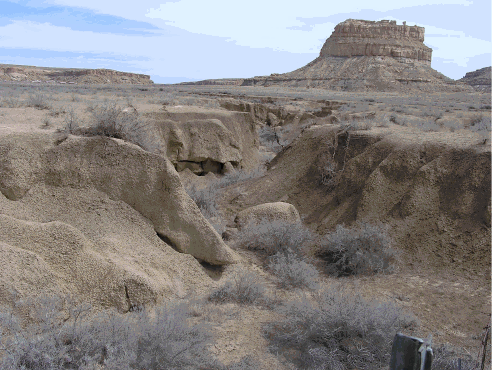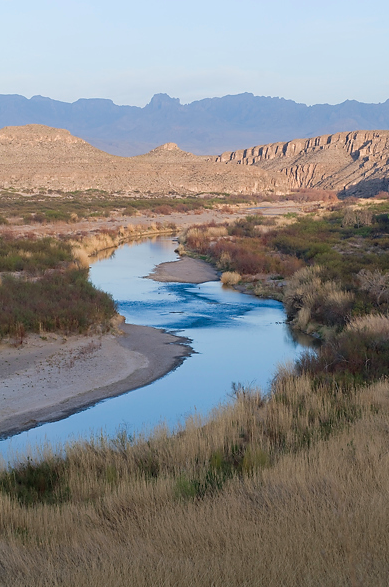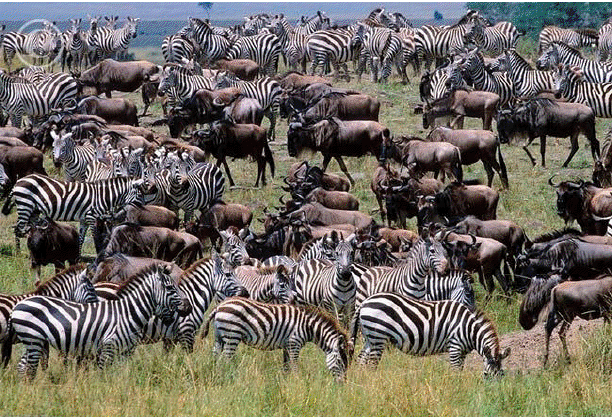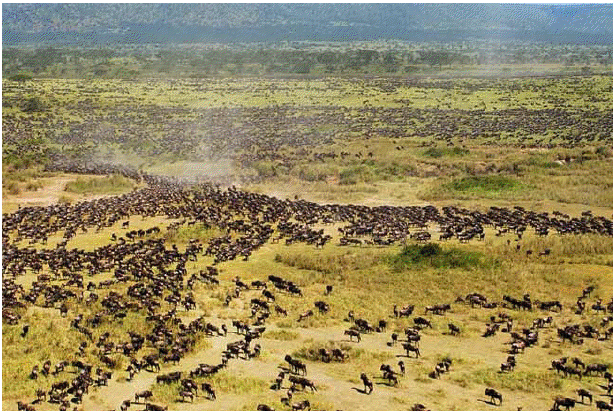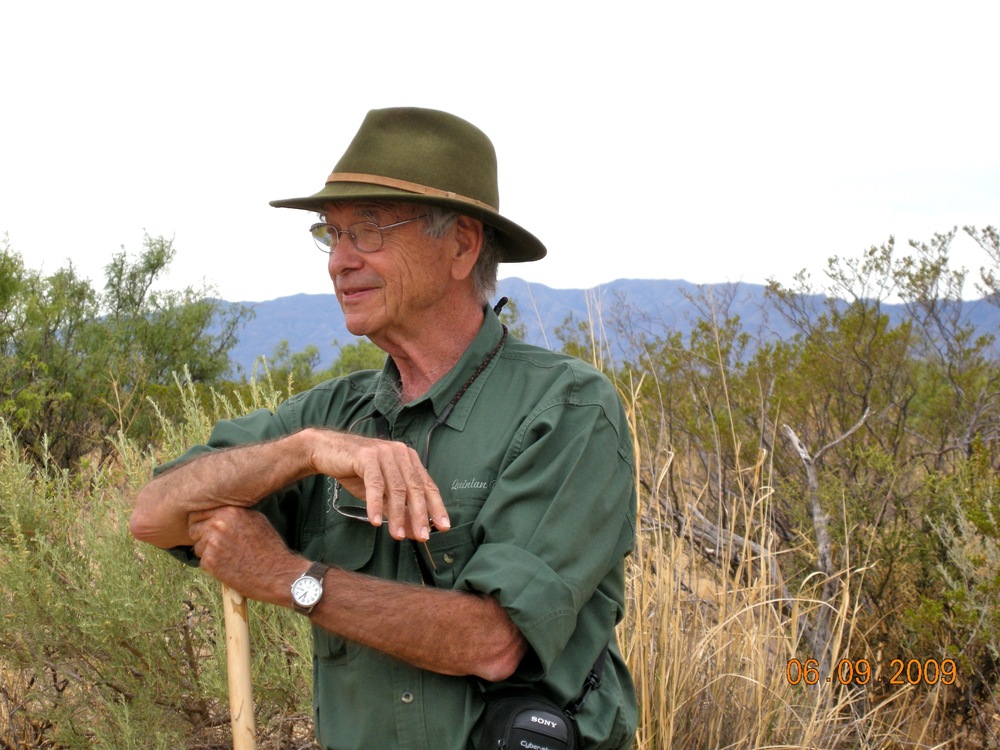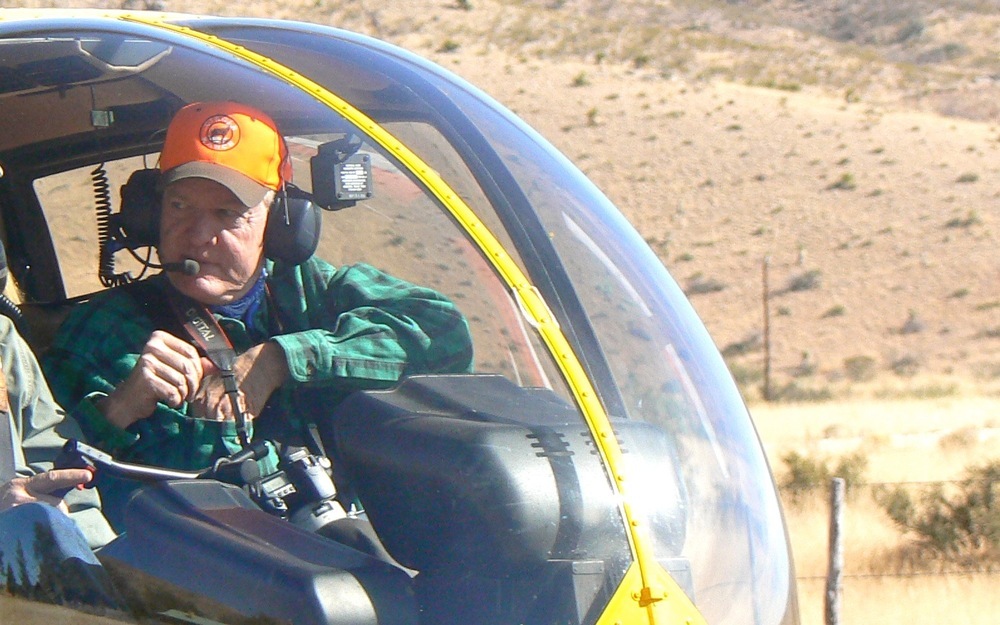Burros and Bio-Diversity: The Rest of the Story
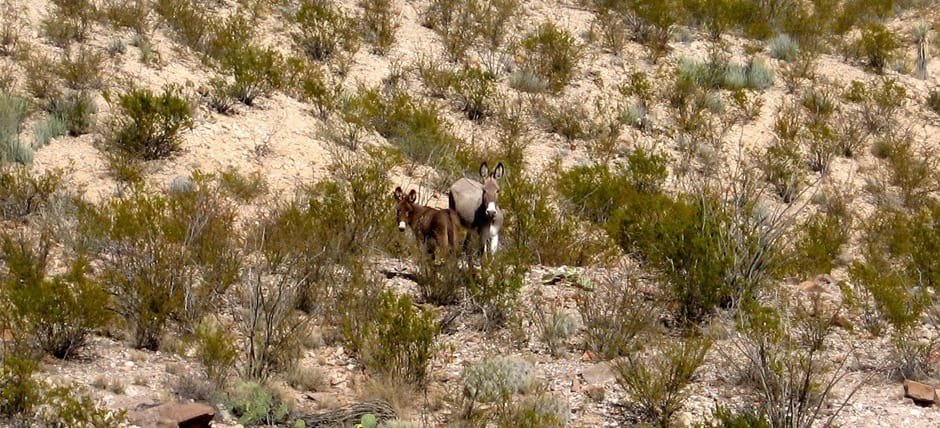
The Texas Parks and Wildlife Department has slated wild burros for eradication at Big Bend Ranch State Park, as part of a general program to remove all “exotics” from all state-owned land it manages in far-West Texas, under the belief that burros and several other species:(1) do not “belong” in our far-West Texas deserts since they are not “natives,” (2) are bad for other wild animals including Desert Bighorn Sheep, and, (3) harm habitats, i.e. plants and water. This burro eradication effort is supported by the Texas Bighorn Society, and Texas Wildlife Association.
This program is a wildlife, range, and social mistake of great proportions.
“The last word in ignorance is the man who says of an animal or plant, “What good is it?” If the land mechanism as a whole is good, then every part is good, whether we understand it or not. If the biota, in the course of aeons, has built something we like but do not understand, then who but a fool would discard seemingly useless parts? To keep every cog and wheel is the first precaution of intelligent tinkering.”
― Aldo Leopold, Round River: From the Journals of Aldo Leopold
Big Bend Ranch State Park was once a productive grassland, and could be so again. It sits within 5,000,000-acres in Texas and Mexico held in an international biosphere reserve. With its protection from subdivision, wealth of water, vast area and varied terrain, there is probably no place in the Chihuahuan Desert with more potential to restore a natural system. How is this to be accomplished? By removing entire animal species, or by restoring animal diversity?
PERSONAL OPINION IS NOT SCIENCE
Burro eradicators say that although ancestors of equines once roamed North America, they became extinct in the Pleistocene Period, roughly 10,000-12,000 years ago. They acknowledge that Europeans reintroduced horses and burros 500 years ago. However, they continue, modern day horses and burros that were introduced to North America are non-native.
Circle Ranch Horse Tooth
This native horse molar was found in an archaeological dig at the Circle Ranch Indian Cave in June 2011. It is over 10,000-years old.
Whether or not modern horses are also native depends on one’s personal definition of ‘native’: this is all over the place. What, precisely, is native: Family? Genus? Species? Sub-species? Breed? An animal that is a close relative of, and exhibits the same behaviour as, another animal eradicated by early humans? Genetic scientists often cannot agree among themselves on definitions for these terms, let alone answer this question.
To qualify as ‘native’, did this animal also have to be present in North America as of a particular date and what precisely is that date? Wild burros have been in our deserts for centuries: Precisely how many years or centuries or millennia of presence are required for a ‘green card’? Again, there is no scientific answer, just personal opinion.
During the last 130 years, wildlife restoration efforts across the world have sought to restore populations of wild animals eliminated by human impact. Bison, deer, elk, pronghorn; predators like bears, wolves, ferrets; birds like turkey and raptors: the list goes on and on. Many of the restorations used genetic stock different than the original populations. How long may a population be absent before it is no longer ‘native’ and may the genetics of the replacement animals vary from the original population, and to what extent if at all? Give not only the conclusion, but the science that supports it.
The Department protects and regulates “feral, free-ranging” non-native pheasant and Rainbow Trout.
Meanwhile, the Department means to eradicate elk, an indisputably-native Texas animal making a comeback without any government help, from all state-managed properties in far-West Texas.
And, Texas Parks and Wildlife declares all equines (horses and burros) to be non-native intruders, by any definition. Texas Wildlife Association agrees when the subject is burros. Yet, in the February issue of Texas Wildlife, speaking of contemplated eradication of oryx and several other African antelopes, none which are native under any theory, TWA advises its members that: “Ranchers would be ill-advised to kill off their herds . . . TWA members, nor anyone else, would want to see that happen to these magnificent animals after the efforts by landowners to enhance populations of these species in Texas and in the US.”
Really? In New Mexico, BLM is eradicating all free-ranging oryx.
Our National Park Service is furnishing bison for release into Northern Mexico bio-reserves.
At the same time, Texas Parks and Wildlife’s Management Plan declares bison will be shot if they cross onto Big Bend Ranch State Park (Management Plan posted below).
Where is the science, as opposed to personal opinion or preference, for a single one one of these definitions and/or choices?
There is no objective physiologic, historic or genetic definition being used: These practices and definitions are a mishmash of inconsistencies and contradictions. What is being done depends largely on what some person or group prefers. Often these preferences, and the practices to which they lead, reflect the internal agendas of competing range and wildlife bureaucracies.
This is the case with burro eradications.
Horses of some kind would still have been on this continent in 1492 except for human impact. Horses and their ancestors had been here for 50 million years before humans. Horses have been back for 5 centuries. Burros descend from animals that were natives.
Some experts consider wild burros in some ways to be native.
Other respected experts consider them literally to be native: http://protectmustangs.org/?p=697
But these comments are only intended to get us to think about better range practices. The plants with which horses evolved are all still here, and these will respond to animal impact as they always did, and our ranges suffer from inadequate animal impact which is deficient in terms of (1) intensity, (2) timing, and, (3) animal diversity!
BIODIVERSITY IS GOOD NOT BAD
Thirty years ago wildlife practitioners were introducing non-natives: This was considered good for bio-diversity. Agency personnel still do this with plants and insects.
Quoting from a peer-reviewed paper on Nilgai published in 1983 by Texas A&M: “(Pioneer Texas conservationist) Caesar Kleberg felt that exotics might occupy, in an ecological role (a niche) intermediate among the native game and livestock and thereby increase the biomass of large herbivores the range could support.”
Somewhere along the line wildlife managers flipped to hostility to non-native animals. Out of this has grown the war on exotics which now extends to many natives: It has morphed into an attack on bio-diversity.
Skeptics of this mindset, myself included, call this anti-native thinking bio-righteousness. To us, this fight was lost long ago. And, even if we could eliminate all non-native organisms (assuming we could first agree on what that means), we would be crazy to do so considering that life as we know it would be impossible without literally thousands of non-native plants, animals and micro-organisms.
We can’t turn back the clock, nor should we try. Since Aristotle and Confucius, we have neen warned against extreme perfectionism. Let’s not “make perfect the enemy of good”: We need range practices that use the tools at hand to address with satisfactory competence the vast damage that our species has done, and continues to do, to our deserts. Caesar Kleberg got it right.
Let us heed Aldo Leopold’s warning: “To keep every cog and wheel is the first precaution of intelligent tinkering.” The eliminations of quasi-natives like burros and cows, and true natives like elk and others reduce biodiversity. This harms the land and its wild animals.
MAKING FOES OF FRIENDS
Our property and hunting rights, and our stewardship authority should not be taken for granted. There are so many who would take these away from us. We are giving deep and needless offense to a large segment of our community, inside Texas and across the nation, and in the process creating new, dedicated enemies when we are at best in a small majority. Over 100,000 people, world-wide, have signed an on-line petition protesting burro eradications at Big Bend Ranch State Park. A counter petition, seeking support, attracted 200 votes before its sponsors withdrew it. This 500-to-1 opposition has profound implications for those who would lead wildlife and habitat efforts, to say nothing of funding Texas Parks & Wildlife’s budget going forward.
http://www.change.org/petitions/texas-stop-killing-wild-burros
We all have our opinions and are obviously entitled to them. But an opinion does not become science just because it is held by someone wearing an agency shirt, or because it has been repeated many, many times, or because a group of ‘experts’ agree it must be true. It becomes fact only when proven. And no one has the right to impose personal opinion on the community as scientific fact, without science to back it up. Always basing decisions on sound science is respectful.
Let us also respect the opinions of the various stakeholders involved in this. Attachment II is the Wild Burro Protection League’s position paper. I cannot speak for all the burro folks. But their President, Marjorie Farabee, strikes me as reasonable, moderate, pro-ethical hunting, pro-property rights: an excellent person to help us advance the interests of wildlife conservation in far-West Texas.
Instead, her burro advocates are being driven into an alliance with organizations whose objectives differ greatly from those listed above. These organizations see this issue as a wonderful fundraising opportunity. This will pay for legislative and other attacks against many values we hold dear.
Typical Public Reaction to Burro Eradications
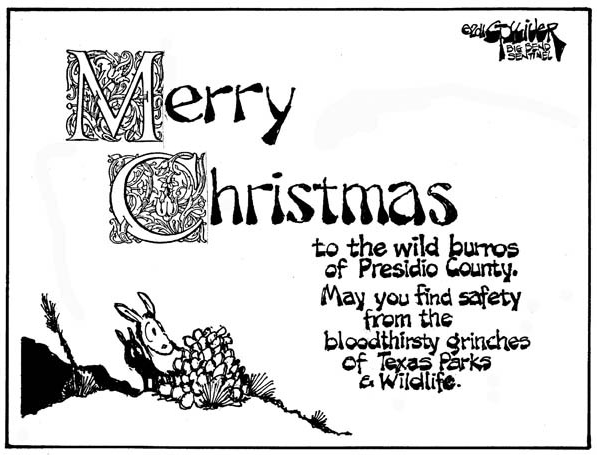
The communities around the parks oppose the eradication of these animals which they consider a part of their culture and history. After hundreds of years, burros are beloved culturally and even cherished by some as a religious symbol. Some Park employees are among the most vocal in their defense of these animals. Burros are living artifacts, historically as worthy of preservation as Ft. Davis or any of the historic structures at Big Bend Ranch State Park, none of which are as old as the wild burro herd introduced by the Conquistadores. We cannot make room for 200 little burros on an empty 330,000-acre public park surrounded by these communities? Why not?
Conservation cannot succeed without good relations with the communities of which we are a part: across the US and the world, these actions generate hostility towards legitimate conservation efforts.
RANGE MISTAKES AND CONSEQUENCES
If the conventional approaches recommended by most “experts” were restoring deserts and increasing native wildlife this conversation would not be necessary: Everyone would be for these practices too. But they are not working.
“The picture on top is a view of a desert grassland in southern New Mexico in 1961. The picture below is the same view in 2002 (courtesy of Jornada Experimental Range, USDA). Livestock were excluded from the site in the 1950’s, but according to the authors of the peer-reviewed paper in which these photos were published, “…processes resulting in the replacement of grasses continued.” What are these mysterious processes, and why has no peer-reviewer asked for scientific specifics about them? Because, the statement comes from ‘authorities’! Such a claim, from you or me, could not get published. Texas Parks & Wildlife Department has no more idea than these authors of what is causing the desertification and habitat destruction they intend to reverse by shooting the burros.” . . . Allan Savory
Bobwhite quail are disappearing across ranges they have lived in for millions of years: not one ‘expert’ can explain why or say how to reverse this.
In far-West Texas, quail, mule deer, pronghorn and even now bighorn are declining.
Our ranges continue to desertify. The great herds are gone as are the open ranges that allowed their movement to seasonal feed and water across thousands of square miles. For a time domestic animals replaced these, but in response to range damage from overgrazing, seventy years of range practices sincerely intended to ‘protect’ habitat from too many animals have led to the progressive elimination of cattle, sheep and goats, until our ranges are virtually destocked: literally so in the case of all federal and state parks. But the plants remain. These need periodic intense animal impact and will die without it.
Grasslands shift to brush and bare ground, of which there is far more than on the first day we started spending $-billions on expensive and ineffective brush control, using bulldozers, poisons and prescribed burns. The brush problem comes from over-rest: yet we cannot examine this fact.
We move 200 pronghorn and 20% survive! We try to understand this but avert our eyes from the most obvious reason: range practices have degraded pronghorn habitat to such a degree that pronghorn can no longer live on it. Our deeply-held beliefs about the need to ‘protect’ the land from too many animals in general, domestics and non-natives in particular, and the eradications associated with this remain off limits for reconsideration. The pronghorn transplant failure is no reflection on the hard work of the people who attempted to move pronghorn. These are good people who have tried hard and failed, because, they attempted to put pronghorn back onto ranges that can no longer support pronghorn. Until we start looking at the root cause of range decline, we are going to fail with all of our band-aids, including pronghorn releases.
“This is wilderness area under management by U.S. National Park Service (NPS). It shows the state of the land some 70-years after removal of all livestock, and having had hundreds of thousands of dollars spent on range conservation measures in the meantime! Clearly, NPS, like Texas Parks & Wildlife Department, has no idea what is causing such severe desertification: as bad as anything in Africa.” . . . Allan Savory
What is it about these outcomes that should build confidence in these practices? I say, when you have tried so hard, spent so much, and yet failed so badly, in so many ways, for so long, reconsider everything, starting with your basic assumptions. Domestics have been proven to help wildlife, and vice-versa. Animal impact, when attentively managed, is proven to work. But, until we remove the bio-righteous and other dogmatic blinders which forbid its use, we will not be able to do what is best for the land and its wildlife.
DO BURROS HURT BIGHORN?
Burro eradications were justified as a necessary first step for Big Bend Ranch State Park bighorn re-introductions. Displayed immediately below is Texas Parks and Wildlife Department’s internal report on burro eradications. It contains at least 20 separate documents quoting dozens of Department staff, many under oath. Document after document confirms that the elimination of burros and the reintroduction of Desert Bighorn Sheep are indivisible in the minds of Department personnel.
Texas Parks and Wildlife Department’s Internal Investigation Report on Burro Eradications at Big Bend Ranch State Park, Part 1 (40 pages) and Part 2 (28 pages):
But when the first 200 sheep were released, they located to areas where burros never go.
This on-the-ground experience did not restrain the eradication advocates. They demand immediate eradications and now say that Bighorn introductions were never a reason! In a telephone conversation on November 28, 2011, Big Bend Ranch State Park Manager, Dan Sholly, told me that burro eradications had nothing to do with bighorn reintroduction.
On October 28, 2011, State Parks Director, Brent Leisure, wrote in the letter posted immediately below:
“Much of the correspondence we have received on this matter has suggested that TPWD is controlling feral burros in order to increase hunting opportunities for desert bighorn sheep. Let there be no mistake on this matter. That suggestion is patently false and is not a basis for which bighorns were reintroduced to the park last year or a reason for which the feral burros are being controlled.”
Texas Wildlife Association’s letter in favor of eradication says in part: “To address on-going misinformation by those critical of the department’s policy, Desert Bighorn Sheep rarely conflict with the exotic, free-ranging feral burros outside of occasional use of available water at spring sites. Scientists note that habitats are not overlapping to any great extent and that feral burros would rarely have contact or impacts on populations of Desert Bighorn Sheep reintroduced to the park.”
Compare these statements with the contents of the report included above, including the summary at page 53, #6.
On June 21, 2012, I wrote Mr. Leisure the letter posted below. This letter has neither been acknowledged nor answered.
Lack of candor about these eradications is rationalized by Department staff, quoted in the Internal Investigation Report as “discretion.” In fact however, statements that are contradicted by the written facts harm confidence in, and the reputations of, those who make them.
Even though they now agree that burros do not hurt sheep, or even share sheep habitats, the eradicators demand burros be killed anyway. Texas Bighorn Society and Texas Wildlife Association go along.
This shows how hard it is to change agency thinking, whatever the facts. It also shows that Texas range theory and practice is dominated by agencies and academia even though Texas ranges are 97% privately-owned by landowners who consider themselves to be independent of government.
Since everybody now agrees that burros do not hurt sheep, why does the Department insist on killing them?
Big Bend Ranch State Park has more water than almost any desert range in far-West Texas. Are we to believe 200 burros on 320,000 virtually-empty acres will destroy 60 miles of riparian area along the Rio Grande River, and hundreds of springs? Considered in the context of the 5,000,000-acre biosphere reserve of which it is a part, and the hundreds of miles of river it contains, this is even less believable.
Big Bend Ranch State Park Manager, Dan Sholly told me on November 28, 2011 that “burros are the only animal I have ever known that (foul) their own water.” I have seen many species of wild animals at Circle Ranch doing this.
At Circle Ranch, our waterholes and tinajas are full of dung from cattle, deer, elk, pronghorn as well as predators like coyotes and foxes, not to mention bird life. What I see in these pictures (screens #1, 3, & 4 above) is a natural and desirable cycling of plant material which can only happen if large grazers are present.
The picture of a hole made by a burro digging for water (screen #2-above) is intended to show more “damage.” As discussed at Attachment 1, the old buffalo ranges were covered with wallows which were critical to the health of multiple species. As discussed in that same peer-reviewed paper, black bear are eco-system engineers whose digging for roots and spreading of seed benefit plants. Many animals including javelina, prairie dogs and even some quail also dig. Animal soil disturbance improves water function.
$-Millions are spent annually to mechanically manipulate soil. Landowners who do this receive conservation awards. But those who say that animals can do this better and cheaper are dismissed as cranks.
Animal Impact Demonstrated in far-West Texas
ictured above is a 1,000-head cattle herd which was located in a 640-acre area of Circle Ranch, in about June, 2010.
These animals most definitely trampled, defecated and urinated around and in the seasonal water pictured here.
Did this harm water and the habitat around it?
We removed the animals in June, 2010 and allowed a long period of rest from cattle. But elk, deer, pronghorn, bighorn, predators, and waterfowl and birds have used this continuously. The second picture is of the same spot, in August, 2011, taken in the depth of the most severe drought ever recorded in Texas. Less than 4″ of rain had fallen in the previous 13 months! Not only has this pond cleaned itself up, but the plants, all the way back up that draw covering thousands of acres, have been stimulated by the trampling and dunging of the animals in the upper picture. This shows the power of domestic animal impact if it is accompanied by attentive management including adequate recovery periods. It points out something else: desert plants and animals co-evolved in dry conditions. Like Brer Rabbit and his briar patch, desert plants and animals like desert conditions. Desert plants will do very well if they get what they need: and they need herding animals, not bulldozers or poisons.
Reason #2: Killing Burros Eliminates Disease
If we plan to kill burros because they visit Mexico and might bring back disease, what about all the sheep, elk, deer, pronghorn, coyotes, panthers, bear, bison, birds, bats and bugs that do likewise?
Reason #3: Burro “Competition” Harms Wildlife
The Texas Wildlife Association statement that burros do not harm or even share living space with sheep, is correct but incomplete. In the picture above, the striped horses (non-ruminant zebras) not only do not compete with the antelope (ruminant wildebeest) but they also help those animals: as non-ruminants they can eat coarse grass which the ruminants cannot digest. Cleaning out the coarse material renders what is left edible by the ruminants, and animal impact stimulates new growth which ruminants can digest. This is called “facilitation” and it is part of a phenomenon known as the “grazing succession.” New studies coming out of Africa demonstrate the same relationship with respect to cattle.
Princeton University has published findings that burros help ruminents like cattle and other species. Read this article summarizing those findings:
http://www.princeton.edu/main/news/archive/S32/93/41K10/index.xml?section=fea…
Our desert plants and animals co-evolved with horses. There is a useful role for horses in our desert ecosystems.
For more information on this, see this post: https://pitchstonewaters.com/coexisting-with-cattle
In the picture above, you are looking at part of a herd that contains more animals than all the mule deer, pronghorn, bighorn and elk in far-West Texas, combined! These animals are occupying an area that is less than 1% the size of the park that these eradications are intended to “protect.” Do we think that animals in these numbers are helping or harming the habitat? Do we think these animals are destroying water, plants and fouling the ground with dung and urine? Or are they stimulating plants, soil life, improving water function, cycling minerals, and increasing soil fertility? It is the bio-diversity in the large animal numbers, and the animal impact of these mixed herds, that in fact keep desert grasslands alive. Does any of us think that an area the size of this picture containing one little burro will be destroyed by it?
Recognizing the obvious implication of the photo includes acknowledging that animals in far-West Texas are subject to many constraints, and complexities not present in Africa. But they also have certain benefits that African wild game doesn’t. How we apply these principles is not easy as I will attest from experience. But let’s understand that animal impact from a bio-diverse animal community including horses is a good thing not a bad thing for habitat and native animals.
And let us understand this as well: No physiological evidence is out there to show that the burros at Big Bend Ranch State Park are hurting anything.
Reason #4: Policy
Which leaves the Department’s last excuse:
“We have a “Policy” to eliminate all ‘exotics’, and, we define elk and burros as such. We are sorry but it must be done.”
Of the several bad reasons for all of these eradications, I find this the most disturbing. As if a rule promulgated by an agency is self-justified, let alone infallible!
History is full of examples of the real damage that can be done by such thinking.
Different Range-Management Practices Produce Different Outcomes
At Circle we have practiced planned grazing for 11 years. More importantly, Circle Ranch has been under some kind of grazing regime for 130 years. Circle has never been under prolonged, total rest from livestock or wildlife, like Big Bend Ranch State Park, and the Wildlife Management Area’s where habitats are in decline.
Two separate teams of Parks & Wildlife biologists, sent to Circle expecting to find that our habitat was over-utilized like the Wildlife Management Area’s next door, have done browse surveys on Circle Ranch and concluded that there is little browse usage to be found on any part of our ranch. A grass survey done in September established that we have enough feed on about 1/3 of the ranch, for 600 animal units for 210 days: 120,000 stock days (SD’s) of grazing, if we took only 1/3 and left 2/3 for wildlife. We have decided not to run cattle this winter (2011-2012) because the La Nina forecast tells us that the drought is going to continue through next spring and summer. But we could have grazed and we have not harmed our land, plants, or animals. We kill no predators. We have 60 elk, an unknown number of aoudad, 350 mule deer, 100 bighorn sheep at any time, and the largest number of pronghorn in the 11 years that we have owned the ranch, maybe 80, 50 rescue llamas and alpacas, and, at times we run as many as 1,100 cattle.
Next door, the Wildlife Management Area kills all its large predators, all elk, all aoudad, has had no cattle for 60 years. Now they must cull mule deer and also remove 15% of its bighorn, because its habitat is in decline. These conventional practices of de-stocking, predator control, and animal removals reduce biodiversity and harm habitat. Yet right next door, Circle Ranch has none of those problems, even though we have so many more animal numbers and animal species.
Plants have the same physiological needs on public land as on private land: periodic intense animal impact from a bio-diverse animal community is needed everywhere in order to protect and enhance the wildlife that is there and to allow us to restore desert bighorn, pronghorn and elk to their native ranges in West Texas.
Here is a video which explains the need for animal impact. Please take three and one-half minutes to consider one of the most profound environmental insights of the 20th Century: https://pitchstonewaters.com/planned-management
Range choices are not so hard once we quit trying to out-smart Mother Nature. We must manage these species in various ways, including ethical hunting and removals. But always, let us manage in nature’s image: We cannot out-smart Mother Nature, but we can easily out-dumb her.
NEEDED: A NATIONAL INQUIRY INTO WESTERN RANGE PRACTICES
Allan Savory (http://www.savoryinstitute.com/about-us/allan-savory/) is a preeminent international authority on desert grasslands and their wildlife. Allan originated Holistic Resource Management. Planned grazing and a decision-making process are the foundations of holistic management.
Allan’s advice, with which I completely agree, is that we have a national, open inquiry into the science behind US range & wildlife management. Since all sides of this issue claim to want science-based solutions, all should welcome open investigation into this critical issue. Allan believes that a Congressional Committee, or some other acceptable body, should conduct this; and that academic and wildlife authorities should not be allowed to control the evidence presented. While this might be done in far-West Texas, ideally we would not limit it to Texas because the desertification of the Western US is appalling, and is destroying along with ranges and wildlife, the Western ranching culture which is so important to our country.
We need to address the major wildlife challenge: desertification. We cannot do that until we adopt a decision-making process that involves true science, the objectives of the communities involved and the financial, social, and environmental conditions that we hope to achieve: i.e. a view of what we want our world to look like 100 years from now.
Such an investigation and the development of such a long-range plan with true science as the foundation for our range practice, would be an objective worthy of every wildlife organization and each one of us.
Desertification Explained Simply by Allan Savory
“The world needs to connect blaming biodiversity loss on desertification and desertification on climate change.”
Dry true deserts such as the Namib and Goby do occur. Most of today’s vast deserts, larger than many entire countries, are skeletal remains of former grassland/savanna environments. Desertification is the name that was, unfortunately, given to the early death throes of grasslands and savannas.
I recently browsed through a book about the Taureg tribe that has lived in North Africa for centuries. The earliest record of their land, depicted in 6,000 year old rock art, shows pastoralist people herding cattle amongst savanna grassland herbivores such as gazelle and giraffe. By 400BC pictures are of Tauregs in their traditional black headdresses with camels and swords, while the modern photos show them still with their headdress in Toyota pickups with AK rifles. A sad record of human interaction with the environment and it’s link to violence.
So, think of desertification as the process of gradual dying of low rainfall grasslands/savannas, and try to understand that this dying process occurs because of biodiversity loss. Without biodiversity loss (see simple explanation of biodiversity loss) desertification does not occur and thus what we call desertification is merely a symptom of biodiversity loss.
When soil is exposed on a square meter of land the temperature extremes between night and late afternoon become far greater, changing the micro-climate considerably. It is simply impossible for the micro-climate not to change. As millions of hectares of land become predominantly bare it is difficult not to see that macro- climate will change. Hot bare soil releases carbon. And large areas of exposed soil dramatically decrease the effectiveness of the rainfall.
Desertification is indeed both serious and accelerating. Serious because of it’s many disastrous symptoms causing endless human misery and suffering for millions of people, as is occurring today and must have occurred during the abandonment of many civilizations. The most common symptoms are: increasing frequency and severity of both floods and droughts even with no change in rainfall (rain becomes less effective), poverty, social breakdown, abuse of women and children, violence and genocide.
Countless billions of dollars have been spent over centuries in a futile effort to prevent or reverse desertification to no avail and today it is accelerating world-wide, including within the U.S. Through the ages, and increasingly with modern range science, people tried to address desertification by reducing or removing livestock, planting grass, and trees, developing machines to disturb and cover soil with litter and by irrigation, contour ridging and other water control measures.
No amount of money spent on technology in the form of machines, piping water and irrigating, planting grass or trees can ever result in more than local small scale “apparent success” while the deserts continue to advance. Planting grass and trees, which at first glance appear obvious things to do, cannot reverse desertification for two reasons – in the case of grass it fails, as the U.S. has demonstrated over vast areas at high cost, because it does not address why the original grass plants died in the first place. And in the case of tree planting, because over most of the advancing deserts the rainfall is too low for trees and their litter to provide adequate soil cover. Only in those limited areas where rainfall is high enough will tree planting lead to soil cover.
Only livestock now, and to a lesser extent remaining remnants of former wild herbivores in the presence of pack-hunting predators, combined with fire suppression can permanently reverse desertification because this addresses the cause of biodiversity loss (and thus desertification). This is indeed fortunate because using herded livestock involves almost no use of fossil fuels, capital infrastructure or any other high cost – mostly education and training.
Today unfortunately governments, international agencies and media are wrongly attributing desertification to climate change. Equally damaging is the fact that some development and aid agencies are providing vast sums to help people adapt to desertification in the false belief that nothing more can be done.
Attachment 1.
THE IMPORTANCE OF UNDERSTANDING NATURAL HISTORY AND SPECIES DEPENDANCE IN CONSERVATION
“Interestingly, the reintroduction of horses . . . , which were present for many thousands of years in the wild until recently, may have had a beneficial effect on bio-diversity. Likewise, in a broad perspective, the feral Burro . . . may be viewed as a potentially beneficial native, rather than as a nuisance alien . . . ” (Page 8)
This is a quote from a peer-reviewed article which was published in the internationally renowned quarterly journal “Bio-diversity” which is distributed worldwide. This journal is sponsored by Tropical Conservancy Institute located in Ottawa, Canada.
This paper concludes that:
- In order to understand ecology, we need to look at the immediate past of the various habitats that we seek to understand, and also look back into the prehistoric past. (Page 13)
- In protecting a single species, we protect many other species with substantial benefits to overall bio-diversity. (Page 13)
- Although the conclusions above are not new discoveries, they have long been neglected in practice. (Page 13).
- Other observations:
- Extinction or extirpation of a species leads to the decline of other dependent species and to a decline of bio-diversity and all its forms . . . (Page 2)
- Extinct animals are a very important consideration in the understanding of the form and function of many surviving species. (Page 6)
- Reestablishment of wild horses in the Santa Rosa National Park in Costa Rica may have caused certain trees to become reestablished as a result of horses distributing the seeds of these trees. This in turn helped bats and mice. (Page 7)
- The extinction of the mammoths and the wooly rhinos on the steppes of the Western Yukon and Northern Alaska meant lack of soil disturbances, and nutrient input. In turn this resulted in the replacement of nutrient-rich grasses in steppe vegetation by nutrient-poor mosses and sedges in a moss-dominated tundra. (Page 8)
- Large animal extinctions in the Southwest radically altered vegetation. Reintroduction of horses and burros may be good for bio-diversity. Reintroduction of camels, once native, could reduce the dominance of creosote and thereby increase the overall numbers of different species. The expansion of creosote to domination in the Southwest following the disappearance of major creosote browsers can be compared to modern invasive aliens introduced without controls which dominate eco-systems at the expense of native bio-diversity. Domination of Creosote, Sagebrush, Saltbush, Chaparral, or Mesquite could be a result of an unoccupied (animal) niche. (Page 9)
- Large grazers maintained higher animal and plant diversity than fires because they create patchiness, continuity of impact, and were less devastating than fire on insect populations. (Page 9)
- The combined influence of grazing and browsing by large animals could lead to more diverse grasslands, in the complete absence of fire. (Page 9)
- Bison influence vegetation through a number of disturbances, such as grazing, trampling, fertilizing, and use of wallows – all of which in certain ways lead to higher diversity. (Page 9)
- Black bears were abundant and widespread in pre-colonial times. Black bears are efficient as major dispersal agents of fruits. They consume 200,000 berries in a day and travel long distances while carrying the seeds in their gut. In addition to seed dispersal, bears dig for edible roots and this benefits plants. Bears are eco-system engineers, but very recently their influence has been eliminated over much of North America. (Page 10)
- Endangered species acts have been criticized for concentrating on species instead of eco-systems, but obviously protecting a single species could lead to the protection of many species and even to protecting an eco-system. (Page 11)
Decisions about burros must be made with an understanding of the interdependence of the entire eco-system, and, its long-term natural history. We must change the way that we make decisions about these. It is time to start thinking holistically and bringing a better decision-making process into play.
More Than Just a Winsome Face
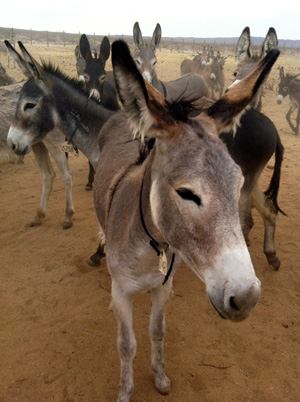
DOCUMENT: Please read this excellent article, and then, think about the many reasons why we should be creating a holistic plan for Big Bend Ranch State Park; then having created that, pushing bio-diversity upwards as fast as possible.
Attachment 2
WILD BURRO PROTECTION LEAGUE POSITION PAPER
https://pitchstonewaters.com/christopher-gill-bio
“One of the penalties of an ecological education is that one lives alone in a world of wounds. Much of the damage inflicted on land is quite invisible to laymen. An ecologist must either harden his shell and make believe that the consequences of science are none of his business, or he must be the doctor who sees the marks of death in a community that believes itself well and does not want to be told otherwise.”
― Aldo Leopold, A Sand County Almanac
Please let me introduce myself. I am a pragmatic businessman and rancher with no agenda other than protecting private property rights, promoting ethical hunting, and the conservation and restoration of wild animals and their habitat. Conservation and ecological ethics demand each of us should speak up for the wild animals that cannot speak for themselves; and against practices however popular, that harm the land.
A Pragmatist’s Solution: Management Not Eradication
I have always thought that those who present a problem should also offer a solution. This burro problem is as unnecessary as it is easy to fix:
1. Acknowledge that wild burros will remain in Big Bend Ranch State Park as part of an effort to protect animal diversity.
2. Establish a target number for this herd based on ecology and considering historical norms: say, 200 – 300. Resolve to manage towards that number.
3. Census the burro population.
4. Remove any surplus by trapping if possible.
5. Previous trapping efforts were so inept they appear designed to fail: Texas Parks and Wildlife staff, starting at the highest levels in Austin, down to Park managers must commit to a proactive effort to conduct the trappings, as was done with burros in the Grand Canyon, bighorn in Victorio Canyon, and pronghorn in North Texas.
6. The trappings could be from 5-10-acre permanent fed pens constructed for trapping and release, and also located for viewing. Quit shooting these animals; start feeding them into multi-acre enclosures equipped with web-cameras and remote-control gate closers. When a pen gets animals, close the gate from the Department office in San Angelo. Put the burros in a trailer and send them away.
7. If pens are deemed unfeasible, consider helicopters.
8. Impose no more ‘health’ red tape on burro rescue than on moved pronghorn or bighorn: remove roadblocks, design for success not failure.
9. Approach Texas Wildlife Association, Texas Bighorn Society, The Wild Burro Protection League, other wildlife groups, and private landowners like Circle Ranch, to join with Texas Parks and Wildlife to pay for this effort. $50,000 ought to do it.
This is a rough first cut. Obviously it must be refined and improved: what is important is deciding to do it and to make it succeed. After that it will be easy.


